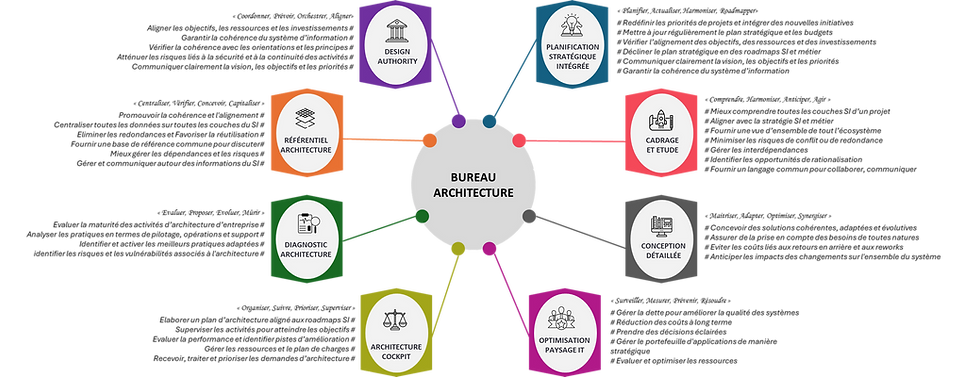Between mastered chaos and guided creation: Why I’m integrating emotional abstract art into my strategic practice
- Gabriel Amine Ghalleb
- May 27
- 5 min read
Updated: May 28
A natural extension, Not a career shift
I haven’t changed paths. I haven’t walked away from strategy, transformation, or enterprise architecture. What I’m doing today is integrating into that same posture another language, another lens, another way to listen to the complexity of the world: emotional abstract art.
It’s not a sudden pivot, but a deepening. Art has always been there within me—sometimes quiet, often in the background—and now it’s taking a more central place. As my experience in business deepens, my artistic practice grows more intense, more confident, and increasingly intertwined with my strategic thinking. It’s a dialogue, not a substitution.
In my strategy practice, I’ve learned to read organizations—their tensions, their unsaid truths, their visible and invisible structures. Today, I also give those forms texture, color, depth, and space. I carve in wood what words sometimes fail to express. But I continue to support transformations, build visions, and align information systems with executive ambitions.
I now move forward with one foot in each world.

Leading is also composing
Strategy and art are not opposites. They are two forms of composition.
To design a roadmap is to balance constraints, aspirations, resources, and timing. To paint a canvas is to balance mass, form, tension, and silence. In both cases, the aim is to give legibility to initial chaos.
Too often, I see leaders seeking clarity without accepting the discomfort of uncertainty. But uncertainty is inevitable. It is the raw material of change. It’s what I dig into in my paintings, what I let spread and then guide into form. In both my consulting and artistic practices, I seek that balance between mastered chaos and guided creation.
Chaos, emptiness, and structure: analogies between business and canvas
Along the path that led me from the business world to the studio, three core concepts emerged as bridges between these universes: chaos, emptiness, and structure.
In our modern organizations, we constantly navigate between chaos and order. Unpredictable markets, disruptive innovations, successive reorganizations—every leader knows the ambient chaos. The reflex is often to want to control it at all costs. But in my experience, it’s better to embrace a certain kind of mastered chaos. It’s within the energy of disorder that new ideas are born. The same applies in abstract painting: a piece often begins with spontaneous brushstrokes, colors scattered without obvious logic. That “creative disorder” is later guided into visual harmony. Allowing room for randomness—whether in a strategic project or on a canvas—can produce a richness that rigid planning would suppress. As the saying goes, “chaos holds within it a promise of renewal.” I’ve seen it firsthand: every crisis in business eventually became a chance to reinvent strategy, just as every uncontrolled gesture in painting can be the start of a new balance.
Emptiness, too, is something art taught me to revalue. In business, emptiness can take the form of a pause, a space for reflection without meetings or KPIs, a silence amidst the noise. I used to see these voids as gaps to be filled. Now I understand they’re essential. In art, it’s the white space of the canvas that reveals the colors, the silence between notes that creates the music. In transformation, leaving space means allowing the unknown to surface, letting emergence happen. An organization that’s too full—of processes, of reporting—leaves no room for improvisation or initiative. There’s no space where innovation can break through. I’ve also learned that in leadership, it’s the breathing room and margins we allow our teams that spark ownership and creativity.

Finally, there is structure. Once an enterprise architect, always an architect. I value structure—whether modular IT architectures or the composition of a painting. The mistake would be thinking that embracing art and creative chaos means rejecting all structure. On the contrary, I’ve become convinced that chaos and structure are inseparable when it comes to building something lasting. In abstract art, a composition may appear free, but it rests on an invisible backbone: lines of force, mass balance, contrast carefully placed to guide the viewer. Likewise, in business transformation, a clear vision and organizing principles are essential. They ensure coherence without stifling individual expression. I call this guided creation: you channel and orient, but you don’t dictate every detail. True creative space lies in that tension—between chaotic emergence and structured direction. That’s where I now feel most at home, whether in front of a canvas or leading a transformation team.
Sensitivity at the heart of lasting transformation
Art and sensitivity are not luxuries for aesthetes far removed from the “serious things” of business. On the contrary, I believe they’ve become essential to navigating complexity and leading sustainable transformation. Over the years, I’ve seen too many strategic plans fail for lack of meaning, for lack of soul. The org charts were perfect. The processes were efficient. But the human pulse was missing. The genuine commitment. The emotional dimension that alone sustains lasting change.
Art has helped me reconnect with that sensibility. An abstract piece only “works” if it moves the person who views it—if it evokes emotion, thought, or introspection. Likewise, a business strategy only matters if it resonates with the hopes and intentions of those who will carry it out. Bringing sensitivity into leadership is not weakness—it is intelligence. It means listening to the subtle signals, understanding fears and aspirations, embracing human complexity. In short, it’s putting people and creativity back at the center.
I’m convinced that leaders who open themselves to art—whether through personal practice or by infusing creativity into their culture—build deeper connections with their teams. They tell stories that matter. They imagine solutions off the beaten path. They rally people around transformation not as a chore, but as a shared creative act. The most durable transformations are those that also touch hearts and minds. Art is a powerful catalyst in that sense—it speaks directly to emotion, bypasses resistance, and invites authentic participation.
Toward an artistic leadership
Emotional abstract art has become an essential component of my life and how I work—not to disconnect from the business world, but to be more present in it, more whole, more aligned. This journey between two worlds has taught me that a leader benefits from thinking and acting like an artist: balancing reason and intuition, mastering chaos while guiding creation, embracing sensitivity as much as analysis.
Each canvas I create sheds new light on how I understand organizations. And each organizational challenge, in return, feeds my artistic vision.
To my fellow leaders wondering what makes transformation truly work, I offer this path: let art and emotion into your field of vision. Learn to look at your organization the way you’d study an abstract painting—with curiosity, openness, and depth. Accept that uncertainty and emptiness are part of the canvas, and can become powerful allies. Remember: you are the architects of a living artwork—your organization.
Between mastered chaos and guided creation, I’ve found a new equilibrium and renewed meaning in what I do. It’s that same creative balance I hope for every leader committed to meaningful change. Because in the end, to lead and to create are simply two expressions of the same human adventure—an adventure where the artist-strategist within us can finally come alive.




Comments